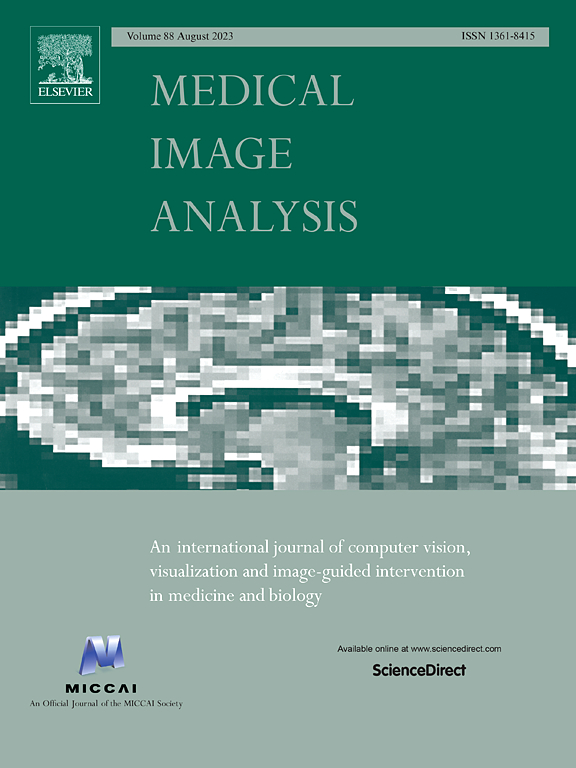全连接冠状动脉提取的三阶段拓扑保留框架
IF 10.7
1区 医学
Q1 COMPUTER SCIENCE, ARTIFICIAL INTELLIGENCE
引用次数: 0
摘要
冠状动脉摘除是计算机辅助诊断冠状动脉疾病的重要前提。由于一些因素,包括远端血管薄、拓扑结构弯曲和造影剂不足,准确提取完整的冠状动脉树仍然具有挑战性。这些问题往往导致当前的分割方法分割过度和分割不足。为了解决这些挑战,我们提出了一种拓扑保持三阶段框架,用于全连接冠状动脉提取。该框架包括血管分割、中心线重新连接和缺失血管重建。首先,我们在分割过程中引入了一种新的中心线增强损失。其次,对于破碎的血管片段,我们进一步提出了一种正则化行走算法,以整合距离、中心线分类器预测的概率和方向余弦相似度,以重新连接中心线。第三,采用隐式神经网络表示和隐式建模,重建缺失血管的几何模型。实验结果表明,我们提出的框架优于现有的方法,在ASOCA和PDSCA数据集上的Dice得分分别为88.53%和85.07%,Hausdorff距离(HD)分别为1.07 mm和1.63 mm。代码将在https://github.com/YH-Qiu/CorSegRec上提供。本文章由计算机程序翻译,如有差异,请以英文原文为准。
A topology-preserving three-stage framework for fully-connected coronary artery extraction
Coronary artery extraction is a crucial prerequisite for computer-aided diagnosis of coronary artery disease. Accurately extracting the complete coronary tree remains challenging due to several factors, including presence of thin distal vessels, tortuous topological structures, and insufficient contrast. These issues often result in over-segmentation and under-segmentation in current segmentation methods. To address these challenges, we propose a topology-preserving three-stage framework for fully-connected coronary artery extraction. This framework includes vessel segmentation, centerline reconnection, and missing vessel reconstruction. First, we introduce a new centerline enhanced loss in the segmentation process. Second, for the broken vessel segments, we further propose a regularized walk algorithm to integrate distance, probabilities predicted by a centerline classifier, and directional cosine similarity, for reconnecting the centerlines. Third, we apply implicit neural representation and implicit modeling, to reconstruct the geometric model of the missing vessels. Experimental results show that our proposed framework outperforms existing methods, achieving Dice scores of 88.53% and 85.07%, with Hausdorff Distances (HD) of 1.07 mm and 1.63 mm on ASOCA and PDSCA datasets, respectively. Code will be available at https://github.com/YH-Qiu/CorSegRec.
求助全文
通过发布文献求助,成功后即可免费获取论文全文。
去求助
来源期刊

Medical image analysis
工程技术-工程:生物医学
CiteScore
22.10
自引率
6.40%
发文量
309
审稿时长
6.6 months
期刊介绍:
Medical Image Analysis serves as a platform for sharing new research findings in the realm of medical and biological image analysis, with a focus on applications of computer vision, virtual reality, and robotics to biomedical imaging challenges. The journal prioritizes the publication of high-quality, original papers contributing to the fundamental science of processing, analyzing, and utilizing medical and biological images. It welcomes approaches utilizing biomedical image datasets across all spatial scales, from molecular/cellular imaging to tissue/organ imaging.
 求助内容:
求助内容: 应助结果提醒方式:
应助结果提醒方式:


